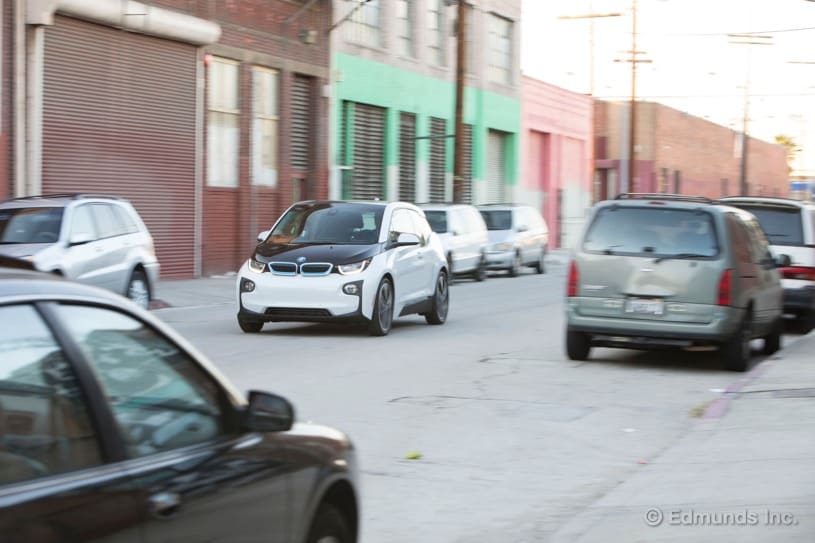Why car shopping is so bizarre in the United States
[ad_1]
But when you want to buy a new car you have to go to different stores for different brands. The Ford store isn’t owned by Ford, though, and the Toyota store isn’t owned by Toyota. They’re owned by other companies, some big and some small, but very rarely are they owned by the company that has its name over the front door.
What’s even more bizarre, if a new car company wants to open its own store and sell directly to customers, it’s illegal for them to do that in many US states. If an established automaker wants to start doing that, it’s illegal virtually everywhere in America.
But how did it get to be this way? Why is this system so resistant to change?
The reasons have to do with the complexity of the transaction (buying a car is more complicated than purchasing a refrigerator or pants) but also with the industry’s explosive growth in its early years.
A specific solution to a specific problem in a specific time
To understand why we buy and sell cars unlike other goods in America requires a look back at the crazy and often brutal early days of the American auto industry
In the late 1800s and early 1900s, you might see a car parked outside of the general store and the clerk inside would happily take your order for one.
Some companies even sold cars on a literal installment plan. Customers would order one or a few parts at a time that were delivered through the mail and, over the course of months, could assemble their own car.
Some enterprising businesspeople became full-time car dealers. William Metzger, who started selling electric and steam-powered cars of various makes in Detroit in 1898, is usually credited as the first car dealer.
“That was one of the big issues in the first 10, 15 years or so of the American automotive industry, ” said Matt Anderson, curator of transportation at The Henry Ford museum. “What is the best model to sell cars to the public? And all sorts of different things were tried.”
In those early days, car companies were popping up all over, although many quickly went bust. But with the few that succeeded, car production skyrocketed. US auto production went from 4,000 units in 1900 to 1.9 million in 1920, according to a 1985 article by Thomas Marx in the journal Business History Review.
One company in particular was making so many cars that even more innovations were needed to handle all the sales. That company was Ford Motor Co. and the car was the Model N.
Produced from 1906 to 1908, Ford made 6,000 Model Ns in one year, an astounding number in its day. (The Model N. was a predecessor to the far more more famous Ford Model T.)
Even though Ford hadn’t yet started using a moving assembly line, it was still building and selling so many cars — including other letters of the alphabet — that the company began recruiting a network of dealers to handle it all.
While Henry Ford oversaw engineering and production of cars, his famously irascible business partner James Couzens handled finances and sales. He recruited independent dealers believing that someone would work hardest when working for themselves.
But he didn’t make it easy for them.
Dealers were required to pay 50% of a car’s value up front when ordering for their inventory and the other half when it was delivered to them, according to Douglas Brinkley’s book “Wheels for the World.” (Other automakers offered more lenient terms.) He also demanded the dealers sell Fords exclusively, said Ford Motor Co. historian Ted Ryan.
Henry Ford himself demanded that dealers keep on hand a ready supply of parts to instantly service Ford cars when needed and, further, that Ford dealerships be kept presentable and clean.
Given the money to be made, dealers were happy to jump in and to sell only Fords. Like canals that had been dug to receive water, these sales channels were largely in place just as the Model T, which would be made in the millions, began flooding the American market.
There were 253 active automakers in the United States in 1908, the year the Model T went on sale, according to the book “The Automobile Age” by James Flink. By 1929, there just 44. Even with 44 automakers, 80% of all cars sold in the US that year were mad
e by just three companies, Ford, General Motors and Chrysler. They all followed Ford’s example of selling through franchised dealers that sold only their brands. Continuing demand for cars and their relatively high cost made that viable.
“They had the power to demand brand exclusivity partly because a dealer could survive on just one brand,” said Brian Allan, a longtime auto retailing executive and now president of Hyrecar, a company that serves rideshare drivers. “That’s very doable compared to other types of products.”
The complexity of the auto sales transaction, what with trade-ins, resale of the owner’s used model, and on-going service, also lends itself to reliance on an outside specialist company, as the famous past GM CEO Alfred Sloan, Jr., explained in his book “My Years with General Motors.”
“Organizing and supervising the necessary thousands of complex trading institutions would have been difficult for the manufacturer,” he wrote in his memoir published in 1963.
The power of dealers
For a long time, car dealers were largely at the mercy of automakers. A car company could decide, virtually on a whim, to allow another store selling its cars to open right down the street from an existing location. Or the carmaker could just decide to cut a dealership off from new inventory.
But, after a few decades, car dealers began taking advantage of their own power, said The Henry Ford’s Anderson.
A car dealer was usually among the biggest local businesses in its area. Car dealers paid taxes, they sponsored local functions like the Little League team and the Fourth of July Parade. And they contributed to political campaigns and the owners even ran for office themselves. Before long, state legislatures across the country were passing laws to protect them from abuse by those big car companies.
“In the forties and fifties you had these sort of mom-and-pop car dealers complaining that they were being taken advantage of by the ‘Big Three’ [Detroit automakers],” said Daniel Crane, a professor at the University of Michigan Law School. “And so this led to this series of dealer protection laws.”
These corresponding financial and political forces have created a sort of mutual gravitational pull that has bound car dealers and car companies together for many decades since.
It has also kept others out.
These laws were intended to keep big automakers, like General Motors and Ford, from opening their own stores. In many states, the laws are interpreted to keep start-ups like Tesla, Rivian and Lucid from opening their own stores, too, said Crane, even though they wouldn’t be competing against already established franchised dealers.
Some say there are very good reasons traditional franchised dealerships should be protected. Car dealerships remain important economic pillars in their communities, said Erin Kerrigan, managing director of Kerrigan Partners, a financial firm that advises auto dealership owners. All that stuff about sponsoring the local Little League team and other community events remains true.
And auto dealerships, especially ones with commissioned sales staff, offer some of the few jobs left at which people can make a comfortable middle class income without getting advanced degrees.
Breaking the model
Some new car companies, like Rivian, Tesla and Lucid, are working to change this system.
They’re selling online and opening showrooms in shopping malls where customers can see the cars and use VR goggles to try out different interior designs.
Tesla has had some success and is now able to sell its cars directly to customers in many states. Other start-up automakers are now joining in, looking to break the hold that the entrenched franchised sales model has had on the industry for over half a century.
Rivian is selling directly to customers because, given how new electric vehicle technology is to most Americans, the company wants to ensure consumers understand the product, said James Chen, vice president for public policy.
Lucid, another startup EV automaker, takes a similar stance and is also selling its cars directly to customers through showrooms, often through “studios” in shopping malls. Lucid customers can order the cars online in a manner similar to Teslas.
Meanwhile, the industry is also adapting to the age of Internet as even traditional automakers roll out websites to enable online ordering and even purchasing of cars. Delivery of the car to the customers, however, still takes place through a traditional auto dealer.
Adapting to change and incorporating it will be the best way for auto dealers to fight back, said Crane. Instead of fighting the start-ups, they could work with them.
“There needs to be a big multi-stakeholder discussion that leads to some kind of a framework for
going forward that allows a lot more flexibility,” he said. “It also gives the dealers real hope of being able to be participants going forward.”
Correction: A previous version of this story misspelled Brian Allan’s last name.
[ad_2]
Source link








